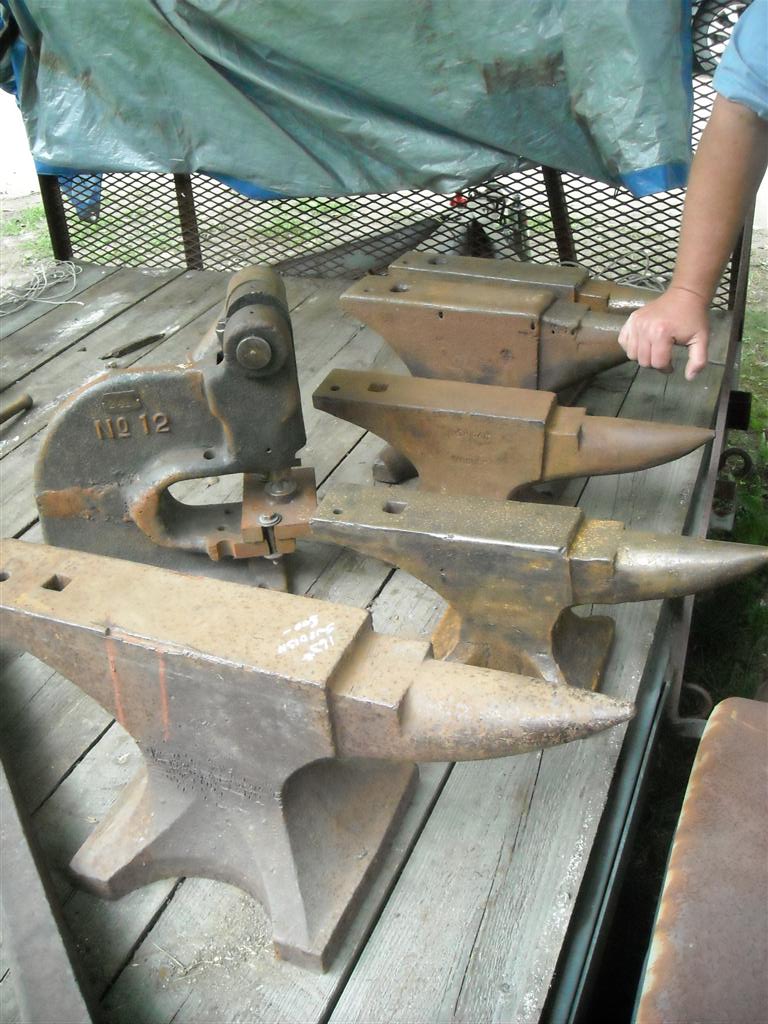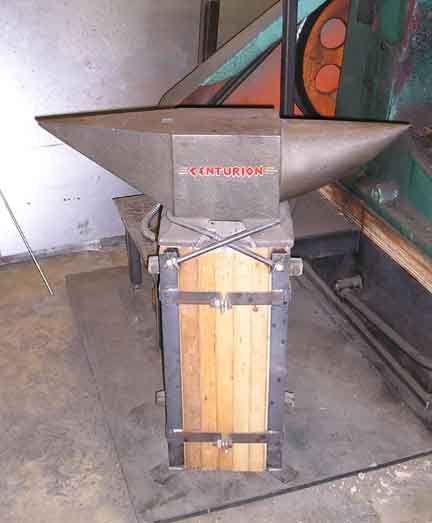Nvils For Sale
here are many ways to prepare a stump, but this is the
one that works for me. This system works if the blacksmith knows how
high he wants his anvil, as it is not a system for which the height is
easily adjusted.It is best to use a heavy wood that doesn't split
easily.
Some non-splitting and heavy woods are American Elm (best but hard
to find),
Sycamore, Honey Locust, Walnut, Mulberry, and Sugar Maple. Woods
that are heavy
but split easily are Oak and Ash. Stumps that split easily can be
strengthened by shrinking an iron
hoop or ring around the top and bottom of the stump. A stump with a
hoop that is shrunk on might need to be redone as the stump shrinks
or the
top and bottom of the stump can be tapered a little and then the
hoop can be
driven on tighter as the stump dries.. A hoop that is tightened by a
bolt is also a practical solution. A hoop with
a bolt can just be tightened as the stump shrinks. Often the local
tree service company will have, or can acquire, a suitable
stump. Lighter weight woods such as Cottonwood, Pine, etc. are last
choice woods for an anvil stump as they are light weight.
Nvils For Sale

Nvils For Sale

Nvils For Sale

Nvils For Sale

Nvils For Sale

Nvils For Sale

Nvils For Sale

Nvils For Sale

how much its the 50 kgs
ReplyDelete